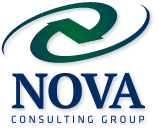“We are in the business of influence. One format that is synonymous with sales execution is the customer presentation/demonstration”
Typically presentations go something like this:
The presentation is derived from the “master slide deck” (aka not created for the specific prospective customer or their needs; this is not about the prospective customer – this is our presentation of our products and services – let’s keep our priorities straight….)
- Slides are selected from the master deck and bullet points are “customized” (aka “changed) to give the illusion that this presentation was tailored to the specific needs of the customer (it is not really, only a small portion of the presentation is focused on the prospective customer; most of it is about us and our products or services)
- We include everything about ourselves as we can. We cram so much that we approach what Garr Reynolds calls slideuments – http://www.presentationzen.com/presentationzen/2006/04/slideuments_and.html.
- When we give the presentation we talk too much and use industry jargon (in an attempt to exercise the influence principle of authority)
- And we end the presentation with our “Thank You” slide.
- One other thing – we put this all together last night (leaving no time to rehearse or refine)
No wonder “they never call back…..”
This is activity for Economy 1.0. In the information parity, knowledge-rich, flat world that is Economy 2.0 the function of the “presentation” is now called a conversation. A conversation with the prospective client who has a problem and is motivated to find a solution. For this conversation, consider the following:
- Loose the PowerPoint presentation. If you have to use ‘slides’ to make your point, limit them (see TED talks for how to make your point without a bunch of slides)
- Forget the bullet points and tables. Instead consider using a single high quality photo to illustrate your point. You want your audience to focus on you and your message and not on the slide content
- Involve your prospective client in the conversation. Any successful pitch must have a “catcher” involved otherwise you are just “pitching” to the backstop. Craft your message to invoke a reaction and response from your audience. Get them involved with “catching” the idea and “pitching” it back to you (aka “a conversation”).
- Frame the conversation with the prospective client’s view point. In Economy 2.0 it is not about you or your product or services. Answer the question that all prospective clients have – “why is it important to me?”
There is no magic formula to creating compelling “conversations” which engage your prospective client. The formula that works is made up of information and preparation which is focused on the prospective client. Armed with the “client’s perspective” and some well thought out tools (moving images, white boards, etc.) your presentations will turn into conversations which move to opportunities which move to collaboration, partnerships, revenue and relationships.
Image: Grand Design Daniel Farò


